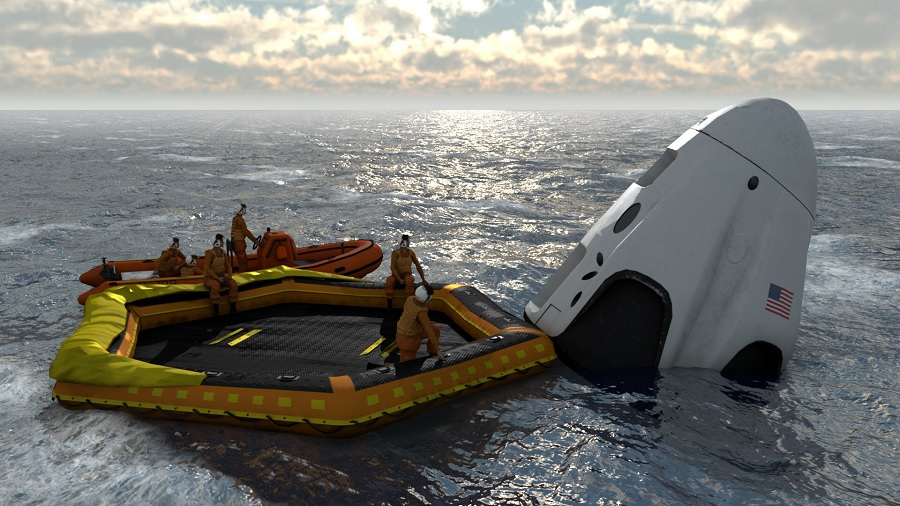
January 11, 2023 – SimX, a provider of virtual reality (VR) medical simulation solutions, has announced that its Virtual Advancement of Learning for Operational Readiness (VALOR) program has been awarded a multi-year program by the US Space Force (USSF) to develop a novel virtual reality (VR) medical simulation training capability for astronaut recovery and space launch missions.
According to SimX, the program seeks to enhance the clinical training that the company is providing to US Air Force (USAF) Pararescue Specialists (PJs), Combat Rescue Officers, and flight surgeons, that enables USAF servicemen and women to identify and treat a variety of medical conditions not seen in other contexts.
The initial USD $1.7 million program commitment will focus on adapting the existing SimX Virtual Reality Medical Simulation System (VRMSS) to include space-specific components as well as unique medical scenarios outlined by the existing Pre-Hospital Space Medicine Care Course (PHSMCC).
The scenarios will be developed in collaboration with and tested by the USAF 24th Special Operations Wing as well as the 1st Air Force, Detachment 3, Human Space Flight Support Operations. SimX also noted that the simulation platform will run on the fully wireless HTC VIVE Focus 3 VR headset.
“The mission of the VALOR program is to adapt VR medical simulation training to enable high-quality, repeatable, and accessible clinical training for any scenario,” said Karthik V Sarma, PhD, VALOR Principal Investigator and SimX CTO. “We’re honored to have the opportunity to take the VRMSS to the next frontier by helping the DOD’s elite medical personnel protect the health of our astronauts and space launch personnel.”
According to SimX, the new capabilities for the USSF aim to enable faster, more frequent, more effective and more cost-effective training for space operational medical support, enabling better medical outcomes for astronauts and space launch personnel. The developed capabilities will also be made available for commercial use to support the growing commercial human spaceflight market and will initially include specific support for the Dragon and Orion capsules, as well as a variety of launch scenarios and locations.
SimX added that a comprehensive training curriculum will be developed, including scenarios representing the unique physiological challenges of a deconditioned astronaut returning from a long-duration space flight.
“The mission impact of this project will be increased overall medical capability for global rescue forces responding to Human Space Flight contingency landings. These capabilities are critical for ensuring the highest standard of care is provided by our PJs as they prepare for the continued expansion of Human Space Flight operations,” said Brent Maney of the Department of Defense Human Space Flight Support Office, and technical subject matter expert of the effort on behalf of the Department of the Air Force.
SimX’ virtual reality medical simulation platform is used around the world by institutions including the Mayo Clinic, Stanford, Northwestern, University of Pennsylvania, the US Air Force, and many others, according to the company. Its platform allows trainees to work together in multiplayer VR cases, either from the same physical space, or from the comfort of their own homes.
Funding for the program was provided through a SpaceWERX Phase II SBIR contract in partnership with Space Systems Command (SSC), with management of the effort by the Air Force Life Cycle Management Center Special Operations Forces and Personnel Recovery Division (AFLCMC/WIS), the Air Force program office supporting Special Warfare and Special Operations Command warfighters worldwide. Technical and subject matter expertise is provided by the 1st Air Force (AFSPACE).
For more information on SimX and its VR medical simulation solutions, please visit the company’s website.
Image credit: SimX
About the author
Sam Sprigg
Sam is the Founder and Managing Editor of Auganix. With a background in research and report writing, he has been covering XR industry news for the past seven years.




